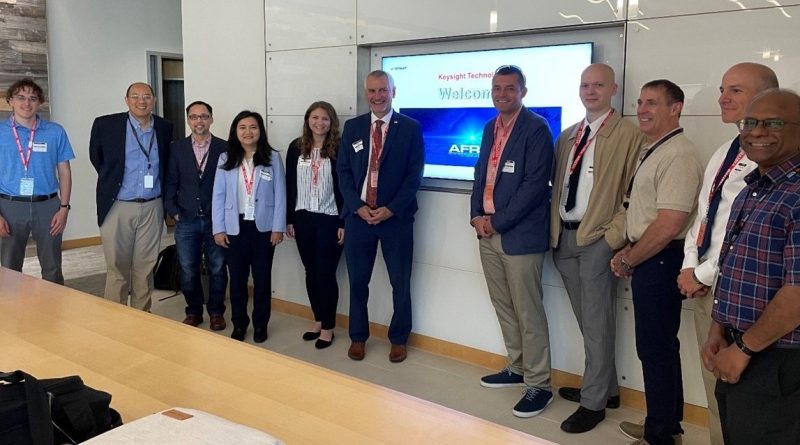AFRL signs CRADA to advance communications in sub-terahertz for NextGen networks
Air Force Research Laboratory and Keysight Technologies representatives pose for a photo after signing a Cooperative Research and Development Agreement, or CRADA, to advance communications in sub-terahertz for NextGen networks.
Air Force Research Laboratory and Keysight Technologies representatives pose for a photo after signing a Cooperative Research and Development Agreement, or CRADA, to advance communications in sub-terahertz for NextGen networks.
The Air Force Research Laboratory, or AFRL, has signed a Cooperative Research and Development Agreement, or CRADA, with Keysight Technologies, Inc., an industry leader in providing design, emulation, and test solutions that help engineers quickly develop and deploy innovations. The CRADA will allow AFRL to leverage new technologies with materials, devices, test techniques, and simulation to optimize wireless network performance.
“AFRL continues to pursue technology development efforts associated with wireless communications capabilities across the electromagnetic spectrum, including the terahertz band for strategic and tactical networks,” said Michael Hayduk, deputy director of AFRL Information Directorate. “Collaborations such as this allow the exchange of information for ongoing research in terahertz communications and hardware development that is currently being performed independently at AFRL and in the commercial sector.”
AFRL will work with the CRADA to leverage Keysight’s existing testbeds to evaluate test and measurement concepts at sub-terahertz, or sub-THz, frequencies, particularly full device characterization and measurement.
Through the CRADA agreement, Keysight will gain access to AFRL’s expertise in modeling wireless channel characteristics and long-range outdoor end-to-end communications link development. AFRL researchers, in turn, will have access to Keysight’s resources and capabilities to do complete performance analysis, including digital twin modeling and simulation of the link.
“Dynamic and assured access to the electromagnetic spectrum and network resources is critical to establishing resilient communication links and networks, and sub-terahertz frequencies are the next spectrum frontier for communications in congested and contested spectrum environments,” said Dr. Ngwe Thawdar, AFRL program manager. “This CRADA is a great example of how AFRL facilitates collaboration with partners like Keysight to enhance research and development in next generation communications and networking technologies.”
Almost all RF systems–commercial or defense– utilize a combination of frequency bands below 100 gigahertz, or GHz, to create airborne and satellite links for voice, data, and command and control communications, Thawdar said. Since frequencies above 300 GHz remain unregulated, increasing demand for higher data rates in communications systems has led the research community, including AFRL and wireless industry companies, to seek the next available wide bandwidth by exploring new parts of the spectrum.
“Keysight is looking forward to collaborating with AFRL to advance mutual research and development interests,” said Vince Ngyuen, vice president and general manager for Keysight’s Technologies Aerospace Defense and Government Solutions Team. “Keysight aims to significantly advance sub-terahertz wireless technologies to support defense and civilian communication links and networks through this CRADA with AFRL.”
The CRADA was signed on Nov. 13, 2023, at the Air Force Research Laboratory Information Directorate. The CRADA relationship is expected to help advance sub-terahertz and terahertz wireless technologies to support defense and civilian communication links and networks.

